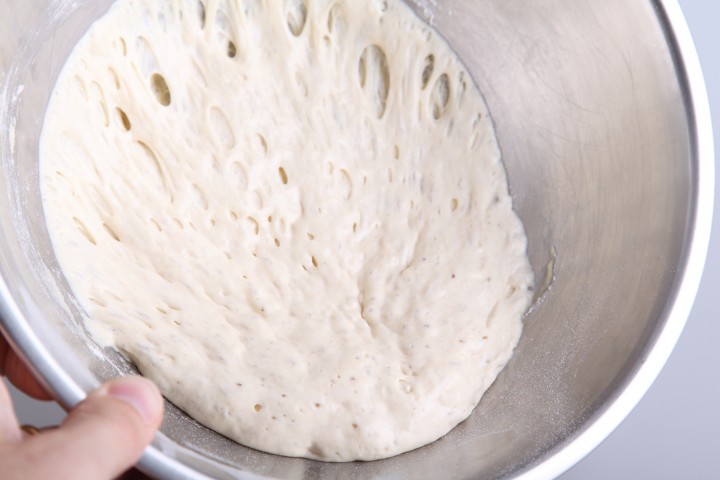
What is it?
There are several traditional methods for creating starters for breads. All of these starters are easy to prepare.
A starter usually consists of a simple mixture of wheat flour, water, and a leavening agent (typically yeast or a sourdough culture). After mixing it is allowed to ferment for a period of time, and then is added to bread dough as a substitute for, or in addition to more yeast. So pre-ferments are critical for best tasting bread – You can call it a starter, biga, poolish, preferment, or sponge – they all do sort of the same job and only really differ by water content.
Biga and poolish are terms for pre-ferments used in Italian and French baking, respectively, for sponges made with domestic baker’s yeast. Poolish is a fairly wet sponge (typically made with a one-part-flour-to-one-part-water ratio by weight), while biga is usually drier. Bigas can be held longer at their peak than wetter sponges, while a poolish is one known technique to increase a dough’s extensibility.
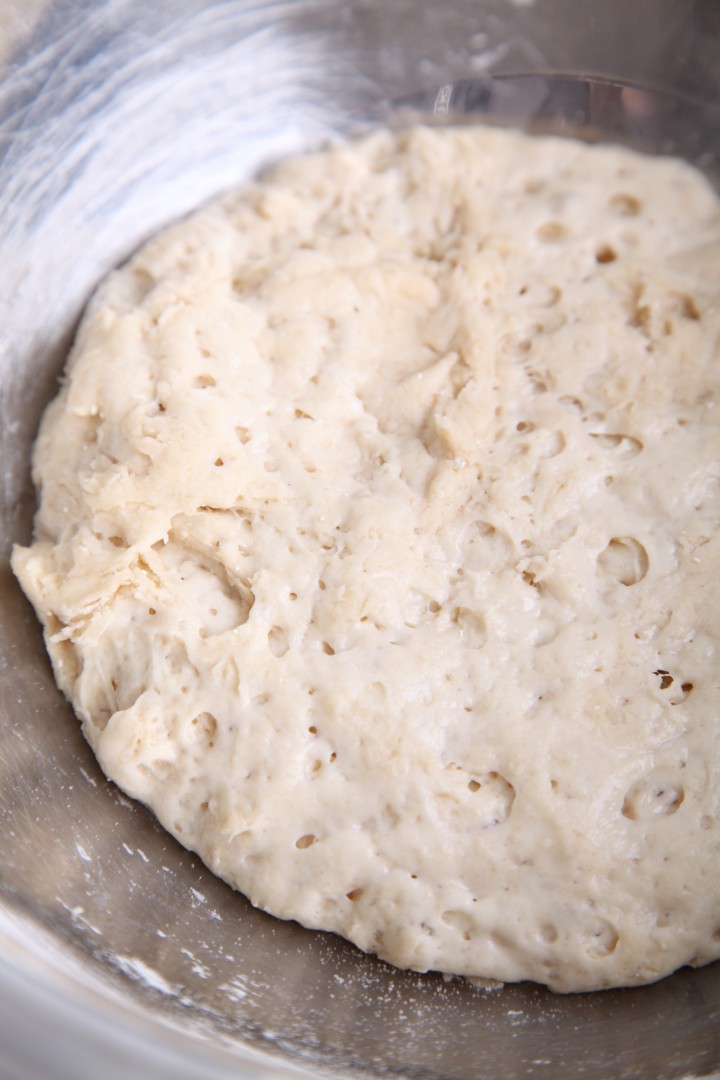
Why use it?
The primary difference between making bread with a starter and making bread with the direct or straight yeast method is that starter breads require much more time to prepare, but the flavor and texture of the bread is almost impossible to achieve with other leavening methods. Bread made with starters like poolish and biga also tends to keep better, compared to bread made from straight doughs.
Poolish & biga tips
- If you are working with pre-fermented doughs like poolish or biga make sure not to ‘over ripe’ your pre-ferment. This is especially true when using larger percentages of preferment in your final dough (think up to 50%) because over riping will kill the gluten in your preferment (the yeast will eat them all) and you will end up with a weaker and hard to handle dough.
- The higher the percentage of pre-ferment you use the more your bread crumb will have a nice chewy texture (but it stops at around 50%). We like our bread that way, it gives you something to chew on. The sugars that are released from the flour in the pre-ferment also add a nice golden colour to your bread.
- Yes you can make the same bread recipe using a biga or a poolish, you just need to make sure you adjust the water content.
- You can make a poolish or biga from another type of flour than the one you are using for the actual bread. For example, we use spelt, rye or whole wheat flour to add extra (and different) flavours to our bread.
Percentage of instant dry yeast in poolish
You can prepare your poolish up to 8 hours but also up to 16 hours in advance. But you have to adjust the amount of instant dry yeast you use. Logically, the more time a pre-ferment gets, the less yeast you have to use.
This is the schedule we use
Poolish up to 8 hours in advance – 0.23% – 0.33%
Poolish up to 12 hours in advance – 0.1% – 0.2%
Poolish up to 16 hours in advance – 0.03% – 0.08%
Example – How to calculate the right amount of yeast
You make a poolish consisting of 200 g flour and 200 g water. You make it 12 hours in advance (typically the night before the morning of baking) and it is summer or a nice warm room temperature for the poolish to ferment in.
You calculate the amount of instant yeast needed as follows:
amount-of-instant-yeast = amount-of-flour / 100 x percentage-of-table
For example;
200 g (amount of flour)
0.1% (yeast amount used in summer for 12 hour poolish)
To calculate 1% of 200g of flour you divide 200 g by 100 and multiply by amount in the table;
200 / 100 x 0.1 = 0.2 g instant yeast
(for fresh yeast multiply the amount by 3)
What does 0.1 gram of yeast look like?
To give you an idea of how tiny the amount of 0.1 gram of instant dry yeast is we have made some pictures. The third picture shows 0.1 grams of yeast in a teaspoon, the last picture shows 0.1 grams of yeast in a 1/4 teaspoon.
To give you an idea of how much instant dry yeast goes into a measuring teaspoon:
1 tsp dry yeast = 3.1 g
1/2 tsp dry yeast = 1.6 g
1/4 tsp dry yeast = 0.78 g
Also check out our recipe for pizza dough with a poolish
Find our favorite bread recipe with a sourdough culture based poolish here



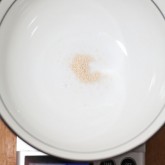
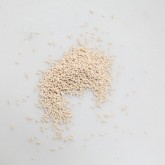
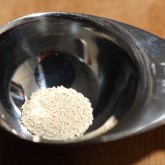
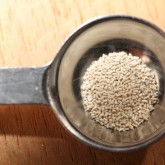

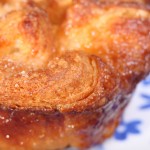
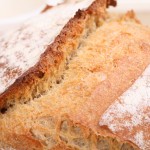
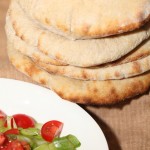
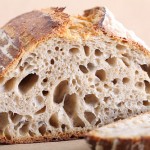
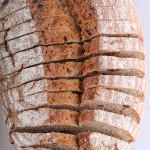
lucy says
why do my polish placeks look great but after I take them out of the oven they fall in the middle?
Marlene Yang says
Hello,
I have some frozen biga in my freezer. Can you tell me how long it can last in the freezer? how can I judge whther it will still be active once thawed?
Thank you,
Marlene
Weekend Bakers says
Hello Marlene, we have never frozen a biga, we always make it fresh from our starter or using yeast. You can check your biga by removing it from the freezer and adding more water and flour to check if it still produces bubbles.
Ram Appadoo says
Thank for a nice website. Baking pizza is (almost) a science. That’s true.
Vashti says
Thanks for such a great post – I found it very informative – especially the very last portion where you let us know how much a teaspoon of instant dry yeast weighs…
I have a quick questions, however… For reference: I’m Australian and an Australian Metric Teaspoon hold 5ml (or grams) of water (at sea level). I understand that American and European teaspoons have different standards, so to help me out with my admittedly anal retentive need to be as accurate as possible, can you please let me know which ‘standard’ teaspoon measure you use? ie, how much water in ml and/or grams (should be the same!?) does your teaspoon hold?
Thanks in advance,
Vashti
Weekend Bakers says
Hi, I think you make a good point why the whole cups and teaspoon system is not the way to go 😉 We advice you to invest in a good simple digital scale. This make measuring out ingredients much easier, faster and more precise! Happy baking!
deb c says
I havea/p flour, dry active-yeast, sugar, salt, water, pans and a convection oven. What i don’t have is a scale. It’s fairly difficult to convert grams to cups, dry and wet, I’m sure you people know the difference. I want to let the poolish mature in the refrigerator. Do you know how, in plain English? I mean U.S. English.
Weekend Bakers says
Sorry Deb, but you should really invest in a good simple digital scale. They are not that expensive and will really improve your baking as cups and spoons are not very precise. Happy baking!
Vashti says
Hi Deb,
You might find this website very helpful.
Also, 1 ml water (at sea level) weighs 1 gram…
It might take a calculator, pen and paper, but you should be able to figure things mostly out..?
But, yes, I’d recommend an inexpensive digital scale.
www.traditionaloven.com/culin…er-ml.html
Douglas says
when, Normal, Temperture, and Pressure condition. If you’re above sea level then boiling point of water decrease @10ºC dpending in the altitude.
I study with Wayne Glissen at CIA many years ago may be you can find something on his book;
books.google.com.br/books…38;f=false
Tom Kilenyi says
I have recently started making artisan breads and so far my attempts have been dismal failures! Coming across your website and your recipe of Pain rustique suddenly I feel hopeful! My doughs would not rise they turned into sticky mess and came out of the oven as flat pancakes. Reading your recipe I now think I used far too much sourdough in my preferment (50-100 g plus 200g flour. The resulting bread has a close texture but tastes quite good. Do you think it is possible to overdo the sourdough content? I am oing to try you recipe and will report on the result. Thank you for the helpful website!
Weekend Bakers says
Hello, most sourdough cultures, when not refreshed too often, do not contain any gluten any more as the sourdough yeasties and beasties chewed on all the gluten. The longer between refreshing a sourdough culture the weaker the gluten are within the culture, and after a few days a wheat culture will turn into soup. This soup will not help the structure of your bread at all. The more ‘weak’ culture you put in your dough, the weaker your bread and flatter. By using a small amount in a starter/poolish, the day before, which still has strong gluten and enough strength to make a bread. So yes, there is something like too much! Happy baking.
tom kilenyi says
Thank you Weekend Baker, you were absolutely right. Cutting the sourdough (well refreshed) by 70% and pronto beautifully risen dowh!
jim mcaloon says
Is it possible to make a good quality scotch morning roll from a poolish mix
Weekend Bakers says
Hi Jim,
We are not familiar with scotch morning rolls but you can in principle add a poolish to a recipe, as long as you keep in mind that the total amounts of water and flour are right. You could start with 20% of poolish to the recipe and see if you like the result.
Maybe there are bakers that have already tried this?
Donna Martz says
I want to make a wild yeast starter that is not sour. Is that possible?
Weekend Bakers says
Hello Donna,
Yes, but it will take a bit of experimenting maybe to get it right. There are a lot of factors involved.
We can help you with our suggestions that you find in this posting under ‘less sour please’ :
www.weekendbakery.com/posts…ough-tips/
Good luck with it!
Grace P. Tunner says
This bread is so much fun to make. I have been making artisan bread for a while, I was okay with it. Especially if I wanted
to make bowls for soup, because it was hardy and tight.
This bread is just great with Sandwiches ( they leak a little, but that’s the fun of it) It is angel light, nice texture, and crumb.
Goes well with dipping and just about anything we have for our meal.
I am sold on it. Love it, will never make the old breads I used to make. And the bonus is, no kneading.
Your directions are good and easy to follow.
Thank you again. I am very pleased with my results.
GPT
Heather says
Nice site, easy to read, perfect article about A vs B vs…, couldn’t be better.
Well executed. Thus, bread from you? I’d eat any time, without question!
Weekend Bakers says
Thank you Heather and happy baking!
Janet Graziano says
How much biga do you use in a regular recipe of bread, making 2 loaves. How do you measure how much biga to put in? I made a big batch of biga so I don’t know how much to put into a recipe. Can you help me?
Weekend Bakers says
Hi Janet,
You normally take (and we would also suggest to start with) 20 to 30 % of the total weight of flour and water and use that in the biga and then of course you subtract the same amounts of water and flour from the amounts in the original recipe.
Also see the example with the poolish above this comment.
Happy baking!
Douglas says
Nay problem if we do not subtract?
Stenly says
Hi weekend bakery,
can you help me how to count the amount of starter for my dough with the same recipe i have? Also the rest amount of the recipe need to added to final dough?
for example :
My recipe for bread asking for : 1000g flour 500g water 20g yeast
how much is the ideal amount of poolish i need to use? ( for example : is it ok to use 400g flour and 400g water? )
So for the final dough, how much flour and water i need to add and combine with the polish ?
Thank you 😉
Weekend Bakers says
Hello Stenly, the rule of thumb is that about 10% to 50% of the final dough can be the poolish. When you use less it does not do much, when you use more you get a weak dough. A good starting point is 20% poolish. To do this, you take 20% of your flour and mix this with the same amount of water. When we take your recipe with a 20% poolish as an example you get;
200g flour
200g water
0.3g yeast
800g flour
300g water
20g yeast
Hope this helps, happy baking!
Stenly says
Thank you for reply, it really help me ! Happy baking too. 🙂
Heather Z. says
I just love all this great information and feedback!
It looks like 0.1 grams is about 1/32 of a teaspoon.
Now if only we could get some anal baking measurement utensil factory to make a 1/32 tsp. for us – ha ha ha = D
You’ve inspired me to try a biga, rather than using straight yeast…I can’t wait…well I guess I’m going to have to wait. (ha ha ha)
Thanks for the inspiration.
Weekend Bakers says
You never know who might be reading this and will feel tempted to market such a tool 😉
Great we gave some inspiration and don’t mind the waiting too much because time is taste!
Happy baking,
Marieke & Ed
Nikke says
1/64 tsp to 1/4 tsp measuring spoon sets already exist, for example:
Nikke says
oops, cut off the link it seems, you can find it with a little google-fu i’m sure www.kitchenkraft.com/produ…ring-tools
Domitilla Valladares says
Please can someone give me a recipe how to make biga without yeast
Weekend Bakers says
Do you mean you want to make a biga with your sourdough culture? A biga is always part of a recipe, so what recipe are you thinking of making?
Katie says
I made a poolish last night for bread I was baking today. The recipe said it would take the poolish 12-14 hours to ripen and then it would be “good” for about two hours. It also said that when the poolish was ripe, bubbles would be popping on the surface every few seconds. After about 13 hours I kept checking about every 20 minutes, but never saw bubbles bursting. After 18 hours, I discarded the poolish.
I’m curious about what I might have done wrong. I may not have added quite enough yeast to the poolish. Or the poolish may have been ready earlier than I expected and I missed the bubble bursting phase. Are those likely scenarios? How would I know what I did wrong?
Weekend Bakers says
Hi Katie,
In the above post you can find exactly how much yeast is needed in what amount of flour and for how long to ferment it to get your poolish right. If, like you say, nothing happened, the first thing we suggest you check is the yeast (sell by date!) quality. Maybe give it another try with a fresh packet of yeast and the instructions above. Bubbles bursting is maybe a bit much to describe what happens. Look at the first picture above, you need to see these small air bubbles, a clear gluten structure and also a growth in volume.
Good luck with it and happy baking.
Robert says
Hello Ed,
Now that I have time in my advancing years, I’m re-awakening a passion for baking by not only practicing it, but by attempting to understand the science behind it as well. Your website has been an amazing and extremely helpful tool for me. Your explanations are clear, straightforward and easily understandable by laymen like myself! I thank you for that.
I’m curious about yeast itself. I made a sourdough starter that I have kept active in my kitchen for some months now. It was basically flour and water left to ferment. I didn’t add yeast as the instructions advised allowing natural yeast (from the environment and the air) to develop, which it did. The taste is a wonderful fermented/sour taste that imparts a sensational taste to my breads.
When I mixed the flour/water, covered it and let it sit on the counter, within 24 hours, it was already beginning to bubble. So when I make a poolish or a biga, do I have to use commercial yeast? Why couldn’t I simply make it in the same way as my sourdough starter? Does commercial yeast lend a specific flavor or other quality that “natural” yeast doesn’t? Or is it just a matter of time; adding yeast speeds up the process over allowing natural yeasts to develop.
Any thoughts? Thanks!
Weekend Bakers says
Hello Robert,
Thanks for dropping us a line! It is clear that you are having the best of times baking and as you describe you also have time on your side / are not pressed for time, when baking. The most important reason to use commercial yeast is its reliability and speed. So if and when you have the time, you can make your poolish and other preferments with the culture no problem!
There is a difference of course in the way your loaves turn out, between full sourdough, hybrid and yeast breads. Not only in taste but also in appearance, the crust and the crumb. In the end it is all about personal preference and the before mentioned time. In this piece we mainly focus on how small the amounts of yeast are when working with preferment.
In our recipes you can find us using sourdough culture for the poolish / preferment. The hybrid pain rustique: www.weekendbakery.com/posts…-rustique/ and the 100% sourdough pain naturel for example:
www.weekendbakery.com/posts…n-naturel/. Depending on the recipe and method, we use between 10 and 15 g culture for the preferment.
Hope you will enjoy your bread baking for many years to come!
Greetings from Holland,
Ed & Marieke
Mansi Shah says
Hey there,
nice website. I hv one question. currently i am learning basics of bakery and pastry cooking. and the day i joined my basic question has been, ” how to decide ratio of yeast, flour, sugar and fat (if any) in baking a bread?” And what will be the yield?” like if I take 200gm of flour what would be the yeast ratio and how much final product will weigh? But i am not getting any answer for this. Can you please help me with this? We generally have dry granulated yeast here.
Thanks,
Mansi Shah
Weekend Bakers says
Hello Mansi,
The ratio between the different ingredients in bread baking are expressed in something called ‘bakers percentage’. It is a convention for listing the ingredients in a dough in which the quantity of each ingredient is expressed as a percentage of the total amount of flour (so flour is always 100%). Example: 1000g flour, 660g water, 20g salt, 10g yeast is expressed in baker’s percentage as 100% flour, 66% water, 2% salt, 1% yeast. Note that this always adds up to more than 100%. The “percentage” is in fact a ratio where the mass of the ingredients are expressed in terms of the mass of the flour used (that is, the unit mass). For example, if a recipe calls for 10 pounds of flour and 5 pounds of water, the corresponding percentages will be 100% and 50%. The baker’s percentage enables the user to more accurately compare recipes (i.e. which is drier, saltier, sweeter, etc.).
A basic bread would be 100% flour, between 55 and 65% water, between 1.8 and 2% salt and between 1 and 1.5% yeast.
There are many variations of course depending on the recipe.
Happy Baking!
Marieke
PS: If you want to learn more and dive into bread baking techniques and formulas we can really recommend buying a good book like ‘Bread’ by Jeffrey Hamelman or ‘The Fundamental Techniques of Bread Baking’ by The French Culinary Institute.
Barbara Montford says
Hi Weekend Bakers and Tony who posted a comment on 20 December 2012
I thought it might be useful to give you my own schedule for using a poolish to make wholemeal, seeded bread.
I make up a 50% poolish 24hrs before I want to start making the bread. I usually use 200g strong white (Carrs or Doves Farm), 200g stoneground rye from Bacheldre Mills, 1/4tsp dried instant yeast (as this is the smallest amount I seem to be able to measure accurately) and 400g water straight from the tap. I leave this at room temperature for a couple of hours then put it in the fridge for anything up to 24hrs but at least 12hrs. The following day I take it out and leave it at room temperature a couple of hours before I want to start making the bread. Then use it with 400g stoneground wholemeal, from Bacheldre Mills, 1 tsp instant dried yeast, 200g mixed seeds, 2 tablespoons black treacle, maybe 30g very soft butter, and between 160-180g tepid water. This gives a 70% hydration dough. I use the folding for 1 minute every 20 minutes for 3 folds method, then allow it to double in size. I then do minimal shaping into loaves and prove gain until about double. This produces a really light and tasty wholemeal loaf. The use of the fridge for the poolish gives the flexibility I need but you need to remember to bring the poolish to room temp before you use it or it takes forever for the final dough to rise. The actual amount of handling is very little but the time does the work. Delicious!
Tony says
Hi Ed,
That’s really usefull thanks. I made the poolish yesterday morning and put it in the fridge after an hour and took it out before bed. It looks fine this morning and I shall be using it shortly so we shall see!
So I guess as with most things baking it’s trial and error and learning to know when a poolish/dough looks ready! The chart is a really usefull guide and help to understanding the process so thanks for that. I’m a home baker so it helps to be able to be flexible with timings to fit it around daily life!
Thanks
Tony
ps I said I didn’t think the process would be linear.
Weekend Bakers says
Hi Tony,
Yes, I see that now, sorry for that hick up! And we totally understand where you’re coming from wanting to have the flexibility!
Glad you find the info and chart useful.
Have a wonderful Xmas time and an inspirational and successful New Year!
Ed & Marieke
Tony says
Hi,
Is it acceptable to let a poolish ferment in the fridge to lengthen the fermentation time. I asked mainly because it adds flexibility in making the poolish and using it, but I understand it can also help with flavour. If so, is there a general rule for converting time in the fridge for time at room temp, eg……….for a 4c fridge and 20c room temp?I’m guessing it wouldn’t be 5 times the time, ie a linear relationship! (The same goes for other spounges and doughs)
any advice would be greatly appreciated.
Great website
Regards
Tony
Weekend Bakers says
Hi Tony,
It is not straightforward or linear and we do not know or have read about any formula. You can see a chart here: www.weekendbakery.com/posts…mperature/ from which you can deduct that growth will more or less stop below 6 degrees C (that is what fridges are invented for, stop/slowing down of bacterial growth). My theory is that the yeast will be active during the cooling down period and more or less stops below 6C. So, a big piece of dough will take longer to get down to that temperature than a smaller quantity, something to also take into account. Also the activity is not linear to temperature as you can see in the graph in the post about dough temperature. What we usually do with the recipes is give it a trial run / educated guess based on experience and if necessary adjust the next time.
Hope this helps a bit.
Ed
rose says
Hi!
I’m happy to see all these great questions and answers on your website! I’m having an issue with a Biga recipe that calls for 2 1/4 c. flour (o, ap or bread) 2/3 c water, tepid and 1 tsp. yeast. I cut these in half for a recipe I’m going to use in the future but I’m pulling my hair out as to why it’s not looking like a biga should. Per the authors recipe and the pic provided, it looks dry; nothing like a wet starter. Apparently there are many versions of this but I’m very sceptical of this recipe. I firmly believe that if I used 100% it would still look like my halved recipe. If there is any advice you could share, I’d greatly appreciate it. Thank You!
Weekend Bakers says
Hello Rose,
I think your recipe and book could be very well correct because a biga (as opposed to a more liquid poolish) should look dry, much more like a piece of dough (also see the second big picture above of what a biga looks like). Are you sure you did not confuse the two maybe?
Greetings,
Marieke
Jim says
I understand how using too little yeast will affect the development of poolish, dough, etc, but what happens if I use too much yeast? If, for example, I should have used 0.1 g of yeast in a poolish but I used 0.2 g by mistake, would the poolish reach (and pass) its prime twice as fast? That would make sense, but it’s harder for me to imagine the effect of too much yeast in the final dough.
If I should have used 2 g in the dough and I used 4 g instead, what would happen? If I timed everything as if I had used 2 g of yeast, what would be the effect of twice as much yeast on the finished bread? Would I just have wasted the extra yeast, or would the bread be adversely affected in some way? You can probably tell I’m new at this.
Weekend Bakers says
Hi Jim,
Your questions are not that easily answered. General amounts of yeast used in bread baking are around 1 – 2 % of the flour, by weight. Too much yeast can cause the dough to go flat by releasing gas before the flour is ready to expand. So it is not just a question of doubled the yeast so it will be ready in half the time (there are no general tables or schedules for that as far as I know), but of course times will be shortened when using more yeast (see above schedule). But there are also factors like water temp, final dough temp, room temp, humidity, etc. to consider and they are almost never the same. But most important, using (way) too much yeast can cause your bread to taste bitter due to way to much amino acids present. Plus the quicker the development, the fewer by-products the yeast produces and the less taste the bread has. And it will also have a different consistency. So yes, these are indeed adverse effects. So it would be best never to use too much yeast and if you do by accident, it is best to start over or maybe try to compensate by adding more flour and water (although this will alter your recipe altogether and the result will probably not be that good).
Lori says
What does it mean to feed your starter? I understand you make a preferment and then use a portion of that to make your final dough for baking. Can you save that remaining portion of preferment and “feed” it to develop flavor and use again? If so, what could you feed it? Would it be carbohydrates and if so could you give me some examples to understand better? Thank you.
Weekend Bakers says
Hi Lori,
We know it can be confusing sometimes. This is how we understand and use it. A starter is a sourdough culture you maintain and use (and need to feed regularly to keep it strong and healthy!) to make a preferment. A preferment (poolish, biga, levain etc) you use in your final dough to add strength, taste, elasticity etc. to your bread. A preferment can be made either with yeast or a little bit of your sourdough starter. The preferment together with the other ingredients will make up your final dough.
Happy baking,
Ed & Marieke
Irvan says
Thank you for sharing this useful tips. Perhaps you can add to the topic or explain how we should monitor the progress of the poolish.
I tried the one with 12 hours. I am not sure really which scale can really give me 0.1 gram so I just making a guess on how much is 0.1 gram. I tried with two pinch of yeast.
I made this at 11pm, when I woke up 6AM, I saw it triple in height. I marked it with marker.. I leave it until 11PM, however when I saw it. I actually dropped to double in height and the smell of alcohol is much stronger compare to 6AM one. In this case is the poolish still usable?
Thank you very much for putting such a wonderful website and share it with the rest of the world. Newbie like me appreciates it a lot.
Weekend Bakers says
Hi Irvan,
That is a good idea! And we will make a picture to show how much 0.1 g yeast is.
To answer your question: When it is overactive, all foamy and even collapsed the gluten structure will be weaker and you try to compensate by using less water in the final dough. This is only to rescue the poolish and you still really want to bake bread (don’t make a habit out of it, it will probably not be your best loaf ever anyway), it is better of course to use the poolish when it is nice and ripe and not collapsed. On the other hand, if the poolish is not yet fully active you can compensate by using a little bit more yeast in the final dough.
Thanks again for your suggestion and happy baking!
Ed
Karin Anderson (Karin's Bäckerei) says
I read in “Cook’s Illustrated”, that the poolish is most active when it is just on the brink of collapsing, when the bowl is gently tapped. What is your experience?
Weekend Bakers says
Yes, that is our experience too. The challenge is to find that ‘brink’ point of course, before the collaps. One of the tell tale signs is the poolish starting to get a bit foamy before collapsing.
Dee says
Gluten is a protein and fermentation only affects starches. So how can gluten be fermented? Could it be that the gluten is affected in a different way maybe by the by-products of fermentation like acidity etc…? I am trying to understant…
Weekend Bakers says
Hi Dee,
I do not know if the model of the process we describe about the bacteria or yeast chewing on the gluten is 100% scientifically correct, however the end result is the same. When a preferment over-ripens the dough/gluten structure turns into soup.
Reynaldo says
Gluten is a protein. My understanding is that the gluten is not broken down by fermentation(yeast) but by enzyme reactions. You can think of the gluten as a the skin of a balloon and over time, that balloon will have holes eaten in it by the naturally occurring enzymes. Enzymes break down proteins, that is why papaya, high in natural enzymes, is often used to marinate meats and as a natural digestive.
Weekend Bakers says
Thank you for your very helpful addition Reynaldo!
Mike says
The analogy of the yeast eating the gluten works, even if it’s not 100% accurate. As the yeast dies, it releases enzymes like glutathione. This has the effect of unlinking the proteins that form gluten. After a while, you have a ton of yeast in your preferment, then when the waste products like alcohol and CO2 hit a critical level, the yeast begins to die off a lot more quickly, thus greatly increasing the level of glutathione in your sponge. This isn’t necessarily bad, as in some cases it can make doughs that need to be very stretchy easier to work with. (This is why a lot of places that make pizza dough will throw in a bit of an older batch of dough when they mix a new batch.)
Weekend Bakers says
Thanks for the addition and explanation Mike!
Esther says
research has shown that true sourdough that has been fermented for at least 48 hours is gluten free and can be eaten by people with celiacs disease. Additionally, the sourdough bread becomes one of the most useable forms of protein because the gluten is broken down into the individual amino acids and become highly digestible. structure can be given to this soupy dough to make a light bread by stretching and folding techniques.
Weekend Bakers says
Thanks for your comment. Sounds very interesting. Of course longer fermentation makes bread better digestable, but when all gluten are digested you indeed get a soupy dough. You probably have to bake it in a pan or something to keep it together? Do you have any recipe for this kind of bread, love to try it!? Happy baking!
Neil says
By ‘over-ripening’ the pre-ferment, do you mean leaving it too long (how long is too long?). And are you saying that the yeast will eat the gluten?
Thanks!
Weekend Bakers says
When you have just mixed the poolish and you stir it with a spoon it will fight back because of the newly formed gluten. Within a few hours bubbles start to appear and the poolish starts to rise a little bit. After this fase (6-10 hours) the poolish will become ‘stringy’, when you pour it from your bowl you will notice long strands within the dough. These are the gluten chains which have been formed by magic and the poolish will grow in size and become airy. However the yeast and bacteria (if you use a sourdough starter) need ‘food’ to produce acid and bubbles and they kinda chew on these chains of gluten/starch to make little bite size pieces of carbohydrates to feast on. This is a good thing because this gives the poolish its complex sweet taste; big sized carbohydrates/starch of the wheat broken down into multiple type smaller carbohydrates. During the next stage the yeast makes alcohol and the poolish starts to foam and possibly collapse because of over-fermenting; the gluten weaken and can not hold the air any more. You should use the poolish before it starts to foam and collapse, this is where the poolish passes on its best qualities to your bread. If you wait even longer the poolish will because soupy, all gluten have been broken down by the yeast, you can stir it with a spoon without noticing any structure.
Hope this helps!
Ed